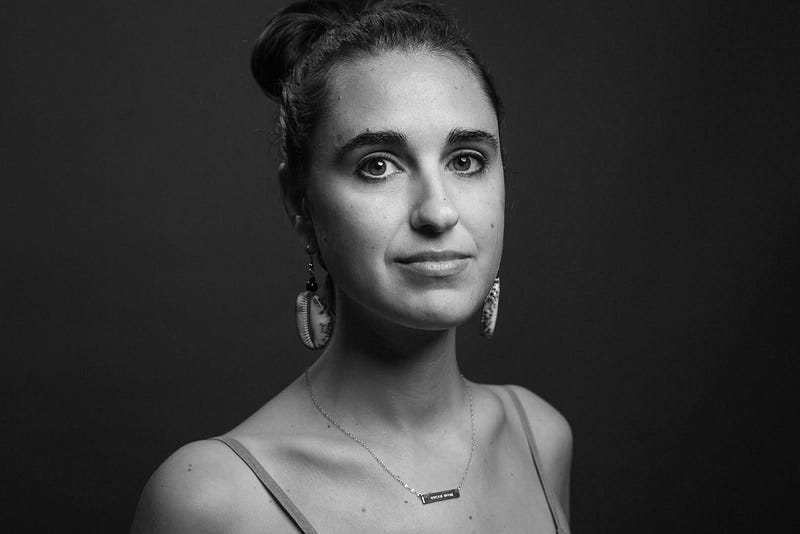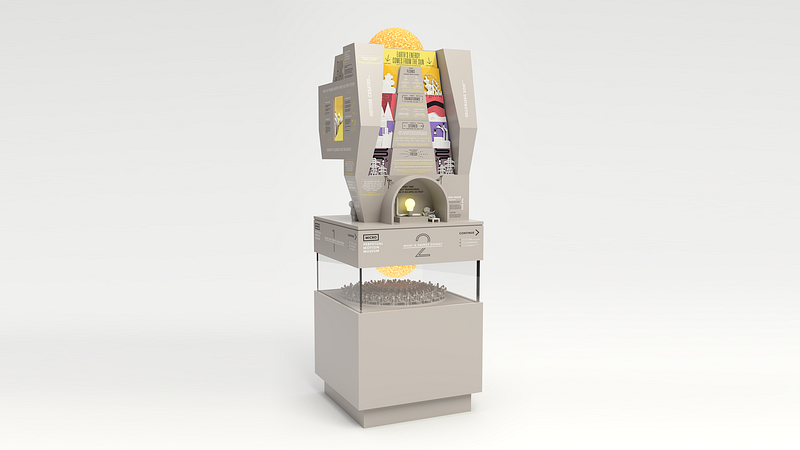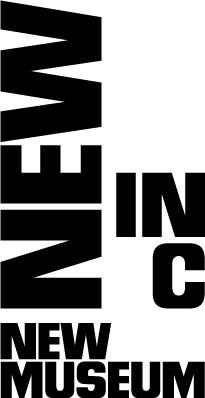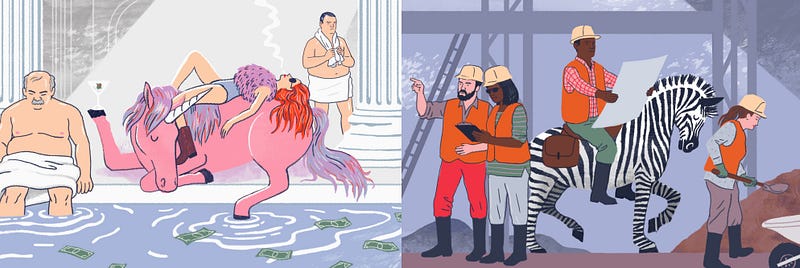
An interview with Stephanie Pereira of NEW INC
As part of our series for the Collective Wisdom field study, we present this interview conducted by Katerina Cizek
 Stephanie
Pereira, NEW INC
Stephanie
Pereira, NEW INCStephanie Pereira is the Director of NEW INC, a museum-led incubator, cofounded in 2013 by Lisa Phillips, Toby Devan Lewis Director, and Karen Wong. It is a not-for-profit platform that furthers the New Museum’s ongoing commitment to new art and ideas. NEW INC’s mission is to advance culture, engender an equitable environment for creative entrepreneurs, and drive social change.
Entering its sixth year, NEW INC supports roughly 100 members working at the intersection of art, design, and technology — 50% of whom are women, and 50% are people of color — selected via an annual open call. The program includes a dedicated workspace, enrollment in a professional development program, and access to a mentor and alumni network of nearly 500 people.
NEW INC’s members have raised $18M in investment or philanthropic donations, 175 related businesses have been created or retained in NYC, and more than 392 jobs have been created. Alumni include: Interactive film director and producer Eliza McNitt, whose award-winning VR film Spheres was the first VR project to sell for seven-figures; Scatter, the experimental media studio behind hardware product DepthKit, a primary tool of VR filmmakers; Scope of Work, a talent development platform that helps young people of color gain access to NYC’s powerful media production and advertising network, and MICRO, a NYC-based non-profit that builds tiny traveling museums that can pop-up anywhere from the DMV, to hospital lobbies to public libraries.
 MICRO’s
Perpetual Motion Museum
MICRO’s
Perpetual Motion MuseumCan you give us a bit about your background?
Prior to joining NEW INC, I was at Kickstarter for over six years. My background is in arts administration, so before Kickstarter, I’d worked in non-profit arts administration, most recently running, learning, and engagement at Eyebeam Art and Technology Center.
I’m curious to hear your thoughts on co-creation and on interdisciplinary practice. What do you think works and doesn’t?
I’ve been reading a book by a woman named Priya Parker called the Art of Gathering. The premise is: How do you bring together a community in a meaningful, transformative way? Who do you leave out ? I have organized many invite-only events — not to be exclusive but as a way to create a more productive environment, where you can set a very clear bar for participation and engagement. You don’t have to wonder about: How do I stretch to include all possible points of view?
Can you tell me how you define co-creation?
The purpose of my thesis was to investigate opportunities for creating a museum space that was welcoming and inviting and felt alive, not like a mausoleum. I was a student at the School of the Art Institute of Chicago, which means that all my classes were right across from the Art Institute and I had free access. They have an incredible collection. So it was a no-brainer that I was going there and hanging out the galleries and looking at paintings.
As I was spending more time there, I was noticing that most people don’t have that relationship with museums. Museums are set up in a very top-down way, where visitors are encouraged to be passive. It’s a paternalistic experience: These are the policies, these are the guidelines: “No eating, no drinking, no running, no …” I also have led many group tours. The first thing you do is tell everyone the rules: “You can’t get this close to the paintings. You can’t touch anything.”
Through my thesis research, I had this question: “How do you design a co-created space?” The idea was that if people have actual agency in a space, they’ll have more of a meaningful relationship and connection. I studied the work of David Bohm, a physicist and philosopher who wrote a book called On Dialogue. I studied Paulo Friere and his thinking around Pedagogy of the Oppressed, his work with leveling the playing field for participation in a country like Brazil.
Interestingly, Chicago is known as hyper-segregated; it’s very diverse but not integrated at all. As a New Yorker, it was the first thing I noticed. It’s very visible.
I ended up creating a Little Arts Society, an arts adventure club. We would choose a place to visit, an art event or a museum. We would go and we’d agree as a group on the terms of engagement for the space and then we would take over the space in the way that we defined. For example, we might go to a show in a very traditional way, where we walk around and look at the work, but then we would have signs printed out that we would put in the café, so we would take it over and turn it into a place where we could talk about our experience and invite others to join us. Once we re-wrote museum maps based on what we were seeing. We created our own audio guides by recording what we saw and discussed, then uploaded them and sent out press releases that said, “Download an audio guide to the contemporary Chinese photography show at the MCA.”
This is how we defined co-creation: We were creating something as a group, but we were also trying to create this messy, interstitial experience that anyone could also feel very invited to.
Now that you’re out of museum work, how do you feel that your organization has co-created and what are your visions for it?

A lot of museums, the way they define community engagement is through what they call “outreach,” which is: “We define a program, we decide the community needs us, we give them something they don’t have,” which is really, again, top down. It’s assuming that your community has nothing to bring or to offer. The New Museum has done many things in this way, but one of the things they’ve done is create NEW INC, which operates out of the space next door to the museum. It is an interdisciplinary community of about 100 people working in art and design and technology. It is predicated on this idea of creating a space, a platform, a context for people to gather and co-create.
I just did new member interviews, and we have about, I think, 17% returning this year. We said, “What was the best thing about working here this year?” Everyone said, “The community.” We pushed and said, “Tell us more about that.” They said, “Well, this person sits next to me and inevitably our work started to blend, or we decided to create this event together, or we did a research trip together…”
You can have people from disparate practices and by putting them next to each other in an open space, you create a cross-pollination of thinking and perspectives. It’s not just about the actual work you create, but the way that you think about your work and see the world around you — all of it is informed by the experience.
Can you tell me a little bit about the landscape of incubators in these kinds of spaces?
We think NEW INC is the first museum-led incubator. Traditionally, a lot of incubators come out of the business sector or private/public sector, where the bottom line is always: “If we support these individuals, these businesses, it will make our economy stronger.”
The museum’s incubator is about creating a space where people from different disciplines and backgrounds can come together to help advance their fields in some way. We’re going to advance culture and also make a space that’s equitable, opening up the field and who’s participating.
NEW INC was the first organization to put a stake in the ground five years ago around that. We’ve since seen many more museums do this. We’ve seen cities do this, universities have gotten into the game. At universities, it’s a mix in terms of the model: Is it on the business side? Is it on the cultural side? I think this idea of a cultural incubator is a global thing.
What about residencies? Do you know of examples in tech companies or at scientific institutions?
I think the Autodesk residency is the most well-known. They have a purpose-built space that’s quite fantastic, because of all the incredible tools and machines at your fingertips. As a fabrication studio and as a prototyping studio — as a place to play — it’s quite exciting. It’s unusual to the extent of what it provides, but it is pretty typical of businesses offering residencies in that it’s about bringing artists in to play and then seeing how they use the tools differently, see how they use the services differently, see how they influence or inform the workforce.
Microsoft also has a residency program. When they invite an artist in to play with their new technology, they’re also learning from how artists use it, so that they can further refine things. We have a partnership with Bell Labs, which is the pure research arm of Nokia, at this point. The purpose of the Bell residency is to invite fresh energy into the space to actively collaborate. There’s been a long history of this with Bell. Robert Rauschenberg was one of the artists they worked with. Motion capture was invented at Bell Labs. You have new technology created at this intersection of artists and engineers and scientists working together.
What’s the difference between an incubator and a residency?
Residencies, in my experience, tend to be project-based, although they don’t have to be. I think that the commonality is that it is a development opportunity. They have five months, three months, one week, a period of focused time on a project.
A core difference at an incubator is that you pay for a desk. It is a space where you do work rather than being invited in to work on a creative project in an open-ended way. The idea is that this is part of your business practice. You’re paying for a desk and then we also provide professional development — so everything from identifying your core values to defining your mission statement. Our bootcamp starts with the base: Who you are, what are you trying to do, and then all the way up through details like IP or incorporation or finances.
What are the limitations of a highly commercial space? Can it be detrimental to co-creation?
When you come into a space like this and you have all these incredible resources, the reality is that people have a huge concern: “How do I pay my bills?”
It really does limit your freedom to play, and especially in an incubator where the purpose of this place is to develop and refine your model. Whereas, when I worked at Eyebeam, where the whole purpose was to immerse yourself in the space of your project and the community there, it created a different kind of space. I think what we’re trying to do at NEW INC is to figure out how to negotiate that and open that up.
 Zebras Unite calls for “a more
ethical and inclusive movement to counter existing startup and venture capital culture.”
Zebras Unite calls for “a more
ethical and inclusive movement to counter existing startup and venture capital culture.”
Interestingly, there’s a lot of this conversation happening in the social impact space. Jennifer Brandel co-wrote “The Zebra Manifesto,” which was a call to action to redefine what success looks like in a business. I served as an advisor on that. They organize a conference in the fall called Dazzlecon, where about 400 attendees come and talk about their experiments in this way. None of those people who attended were artists. It’s interesting to see how this conversation is totally passing the art world by.
Is there a role for public media in redefining itself in terms of supporting co-creation?
Kamal Sinclair talked about this in Making a New Reality. Instead of just having one public television channel that broadcasts stuff, public media could have created a context for people to come together, to really broaden that funnel of who gets to participate. I know this is a big part of what they think about at POV The folks at National Endowment for the Humanities, too. I think the other thing is broadening their scope — understanding that media is film and video and audio and games…
It’s not just the content. It’s also the platform.
Yeah…Despite the promise of the internet that we can all be media makers, I think that we’re slipping back into a mode of consuming. When I worked at Eyebeam, there was a moment where it felt like the world was ours for the taking, where the internet provided this opportunity to re-define the world around us.
Someone actually Tweeted, “I miss all the weird websites and Uncle Bob’s blog.” Do you remember that? Do remember when all the websites looked different and everyone had strange blogs or strange internet projects? Now it’s like everything’s been sort of congregated on Facebook, Twitter, YouTube, and then there are micro-influencers who have mass audiences that they’re projecting out to. Everything looks the same. It feels very the same.
I think there’s a huge opportunity to unlock with co-creation. People have to feel like they are party to the creation of the world around them. When I was running my youth programs, the underlying theme for three years was, “Seeing the city as an editable interface.” That was my takeaway working with all these young people — that they don’t see it that way. They see it as a given. We would go up on the High Line and they would be nervous to do anything but walk that path. They had no sense that they could deviate from that path.
This article is part of Collective Wisdom, an Immerse series created in collaboration with Co-Creation Studio at MIT Open Documentary Lab. Immerse’s series features excerpts from MIT Open Documentary Lab’s larger field study — Collective Wisdom: Co-Creating Media within Communities, across Disciplines and with Algorithms — as well as bonus interviews and exclusive content.
Immerse is an initiative of the MIT Open DocLab and The Fledgling Fund, and it receives funding from Just Films | Ford Foundation and the MacArthur Foundation. IFP is our fiscal sponsor. Learn more here. We are committed to exploring and showcasing media projects that push the boundaries of media and tackle issues of social justice — and rely on friends like you to sustain ourselves and grow. Join us by making a gift today.